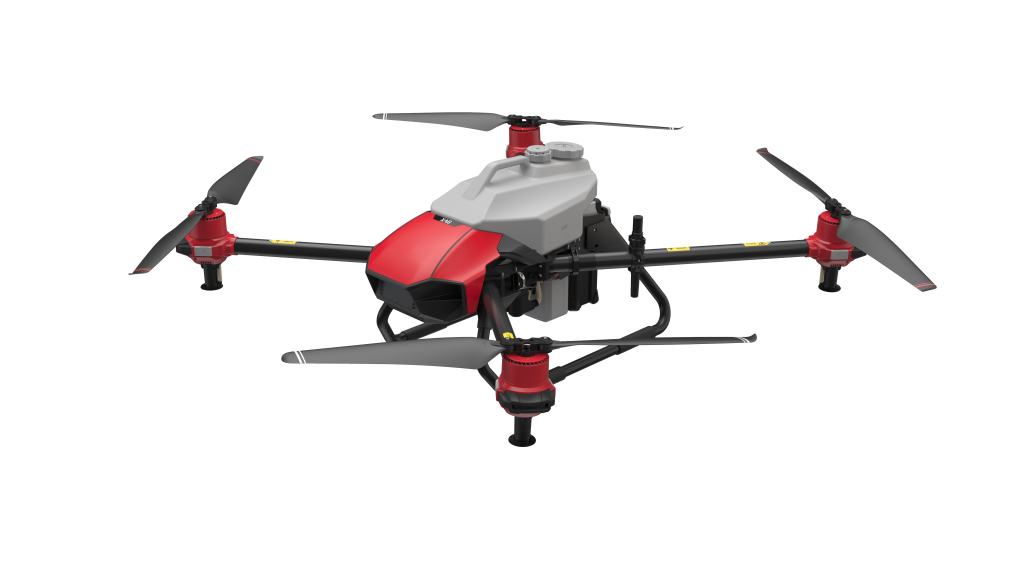Recently, DJI has launched two new agricultural drones, T50 and T25, which have been optimized for application scenarios such as field spraying, fertilizer sowing, and fruit tree spraying, comprehensively improving the efficiency, effectiveness, intelligence level, stability, and safety of agricultural production management. In the promotional videos of these two agricultural drones, the author felt the unimaginable energy brought by drone technology to agricultural innovation, rural revitalization, and farmers’ liberation.
The role of general aviation in promoting agricultural modernization has been proved repeatedly in practice. In 1987, Japan developed the world’s first plant protection drone. At present, Japan has nearly 1 million hectares of cultivated land for pest control using plant protection UAVs, accounting for 20% of the total cultivated land, which has greatly promoted the process of agricultural modernization in Japan.
The success of neighboring countries has brought us a lot of inspiration. China has a vast territory and diverse terrain, with significant differences in agricultural production conditions among different regions. Traditional general aviation agricultural operations are more suitable to be carried out on the vast plains, so the potential of navigation and agricultural assistance has been effectively tapped in the large farms in northeast, north and northwest China. However, in Southeast China, hills are widely distributed, farmland is fragmented, and per capita cultivated land area is small. Although these characteristics limit the traditional general aviation agricultural operations, they provide space for more flexible and intelligent UAVs to exert their strength.
The application of agricultural drones has greatly improved the efficiency and safety of farmers’ operations. Agricultural UAVs are particularly suitable for paddy fields, high stalk crop planting areas, hilly and mountainous areas and other places where it is difficult for manual and ground machinery to land. They are good at carrying out rice field sowing and pest control operations, which can run through the whole growth cycle of crops. Moreover, the purchase and use costs are not high, which helps to reduce operating costs, achieve quality improvement and income increase. Therefore, they are recognized by more and more farmers. From micro to macro, farmers have made agriculture easier and overall promoted the process of rural revitalization.
The new generation of agricultural drones are equipped with multispectral lenses, which can collect and supervise agricultural operation information, generate agricultural prescription maps based on crop growth, guide agricultural drone operations, achieve high-precision pesticide spraying, and reduce the impact on the environment. In addition, its noise pollution and carbon emissions are less than traditional agricultural machinery, and it has the characteristics of environmental friendliness and green sustainability, which helps to improve the rural ecological environment and further reduce the impact of agricultural production on the environment.
Agricultural drones not only provide modern technological tools for agricultural production, but also create new jobs, new social needs, and social value in the process. The loss of rural population, the long journey of young people to cities, the hollowing out of rural areas, the marginalization of agriculture, and the aging of farmers are the challenges faced on the road to promoting rural revitalization. In 2019, drone pilots were officially designated as a new profession by the Ministry of Human Resources and Social Security. From the perspective of salary, job content, and value creation, drone pilots are undoubtedly a decent job that is attractive enough for young people. According to data from the Civil Aviation Administration, practitioners aged 25-35 account for more than half of drone pilots. With the promotion of agricultural drones, agricultural production conditions have improved, and more job opportunities have been created. The enthusiasm of young and middle-aged people to return to their hometowns for entrepreneurship and employment will be further enhanced, gradually changing the age structure of rural population and revitalizing rural areas.







Please sign in to comment
register